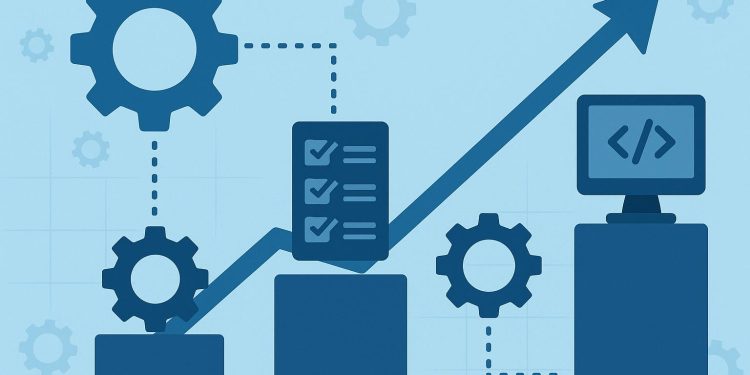Taylor Leese, a Silicon Valley engineering leader and venture capitalist, has spent his career building and scaling complex technical systems for some of the world’s leading technology companies. After earning his master’s degree in computer science from the University of Chicago, Taylor Leese began his career as a computer scientist at Lawrence Livermore National Laboratory, developing advanced security software for U.S. government agencies. He went on to hold senior engineering leadership positions at StackMob, PayPal, and LinkedIn, where he oversaw distributed teams and platform infrastructure serving millions of users. Today, as a partner at Milos Ventures, he invests in startups in AI, energy, robotics, and defense technology. Drawing from his experience leading large-scale engineering organizations, Taylor Leese explains why standardization becomes a critical advantage as technology companies grow in size and complexity.
Why Standardization Becomes Essential as Tech Companies Scale
As companies grow, their development pace often slows for reasons that have little to do with individual skill. Teams build tools in different ways, handle errors inconsistently, and create overlapping solutions to the same problems. These inconsistencies make coordination harder and delivery slower. Standardization, meaning the adoption of shared patterns, tools, and approaches, becomes essential to keep development speed and reliability intact.
Early-stage teams rely on informal coordination—quick conversations and shared intuition. As systems multiply, however, undocumented decisions and improvised methods create misalignment. Without shared baselines, everyday work turns into a series of ad hoc negotiations.
Failure handling shows why shared approaches matter. When each team manages errors differently, outages become unpredictable and recovery takes longer. Standardized circuit breakers or kill switches, backoff policies, and graceful degradation align system behavior across services. If every service responds to slow dependencies in the same way, teams can quickly diagnose failures instead of deciphering unfamiliar behavior.
Functional components reveal the same need for alignment. Without shared libraries, teams rebuild identical features such as authentication, metrics, and data validation. Centralizing these functions in well-maintained libraries removes duplication and lets updates propagate through shared repositories and CI/CD (continuous integration and continuous delivery) pipelines. Engineers spend their time building new features, not repeating old work.
Observability provides another clear example. In simple terms, observability means understanding how systems behave through logs, metrics, and traces. Using the same logging and tracing formats allows teams to pinpoint issues without sorting through multiple conventions. Troubleshooting accelerates, and teams no longer lose important signals in translation.
Rollout practices demonstrate similar advantages. Standardized mechanisms like feature flags, which let teams switch features on or off without redeploying code, and canary deployments, which release changes to a small subset of users first, make releases safer. A shared rollout playbook gives teams predictable, controlled paths for change and reduces deployment surprises.
Service discovery and integration patterns also benefit from consistency. A single standardized method for services to find and communicate with one another prevents brittle custom integrations and reduces maintenance burden. Platform teams reinforce these practices by providing paved paths and clear documentation, making standardized integration the natural choice rather than a forced requirement.
Governance works best when it guides rather than dictates. Standards should draw clear boundaries for interoperability while leaving teams freedom in areas that don’t affect shared systems. This balance prevents tool sprawl without dampening innovation. Lightweight reviews and well-defined decision points help teams adopt common approaches while tailoring solutions to their needs, making standardization a support structure rather than a constraint.
Multi-language development introduces another layer of complexity. Without standard interfaces and patterns, integrations become messy and error-prone. Establishing consistent expectations for how systems interact, regardless of language, allows teams to select the right tools while preserving predictable communication between components.
Standardization also eases cognitive load for developers. Consistent tools and processes reduce the time spent relearning unfamiliar setups or untangling one-off configurations. That clarity frees mental bandwidth for problem solving and feature work. Modern platform engineering embraces this principle, recognizing how standardized workflows boost productivity and help organizations scale without overburdening teams.
Over time, these effects compound. Teams onboard faster, handoffs smooth out, and troubleshooting speeds up as signals remain consistent. Cognitive load falls, and development speed grows alongside team size. Organizations that adopt standardized patterns early gain a structural advantage, avoiding the costly rewrites and coordination breakdowns that follow fragmented approaches.
About Taylor Leese
Taylor Leese is a San Francisco–based technology leader and venture capitalist. Formerly the senior director of engineering at LinkedIn, he led large distributed teams responsible for core infrastructure systems. Earlier in his career, he held leadership positions at PayPal, StackMob, and Lawrence Livermore National Laboratory. A graduate of the University of Chicago with a master’s in computer science, he now heads Milos Ventures, where he invests in startups driving innovation in AI, robotics, and clean energy.








